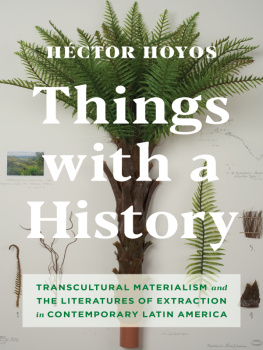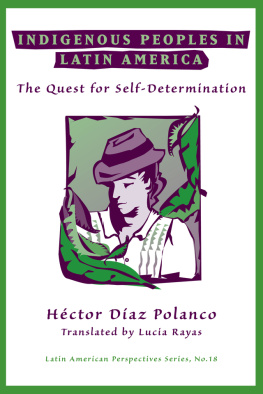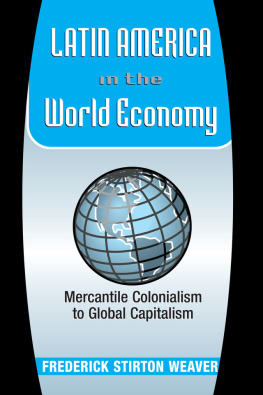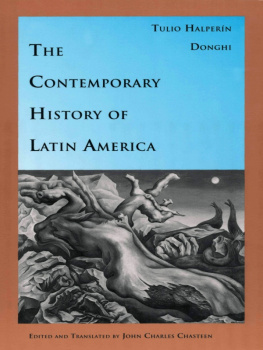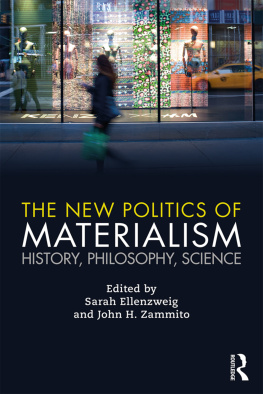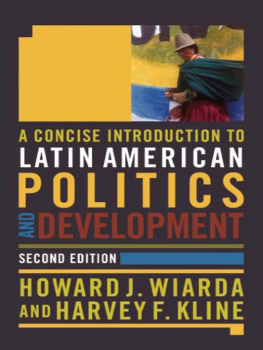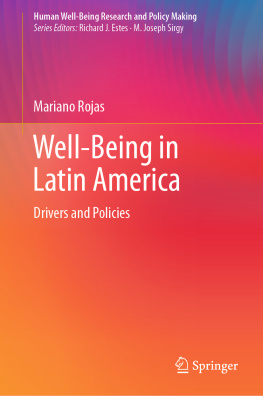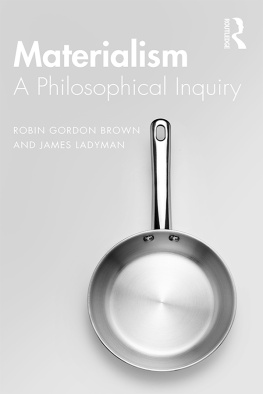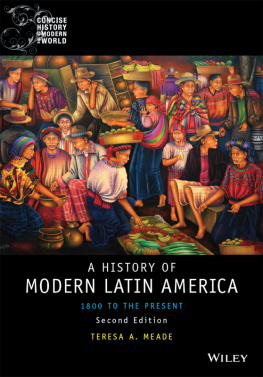Table of Contents
Things with a History
HCTOR HOYOS
Things with a History
TRANSCULTURAL MATERIALISM AND THE LITERATURES OF EXTRACTION IN CONTEMPORARY LATIN AMERICA
Columbia University Press
New York
Columbia University Press
Publishers Since 1893
New York Chichester, West Sussex
cup.columbia.edu
Copyright 2019 Columbia University Press
All rights reserved
E-ISBN 978-0-231-55012-3
A complete Cataloging-in-Publication record is available from the Library of Congress.
ISBN 978-0-231-19304-7 (cloth).
ISBN 978-0-231-19305-4 (pbk.).
ISBN 978-0-231-55012-3 (e-book)
LCCN: 2019011892
A Columbia University Press E-book.
CUP would be pleased to hear about your reading experience with this e-book at .
Cover image: A. Baraya. Proyecto Herbario de Plantas Artificicales. 2013.
Cover design: Lisa Hamm
Qu le dijo la tortillera al filsofo?
No hay masa ya.
Contents
W hile the materialist inklings of this book are my sole responsibility, an assemblage of hospitable institutions and bighearted people made them possible. The former include, decisively, a 201213 Internal Faculty Fellowship at the Stanford Humanities Center; a spring 2014 Deutscher Akademischer Austausch Dienst (DAAD) Faculty Research Visit Grant at Freie Universitt (FU), Berlin; and an Alexander von Humboldt Foundation Research Fellowship for Experienced Researchers for the summers of 2015 and 2016, also at FU. I am appreciative of fellow travelers and mentors in Iberian and Latin American Cultures (ILAC), the Division of Literatures, Cultures, and Languages (DLCL), the Center for Latin American Studies (CLAS), Modern Thought and Literature (MTL), and Science, Technology and Society (STS), among other provinces of Stanfords acronym heaven and alphabet soup. The latter include, unwaveringly, Dan Edelstein, Lanier Anderson, Debra Satz, Sepp Gumbrecht, Joachim Kpper, and Susanne Zepp. Intellectual sustenanceun caldo de cultivowas provided by materia, the research group on Latin Americanist and comparative postanthropocentrisms at Stanford, as well as its co-chairs, guest speakers, regular participants, and cognate courses.
Since 2013, I have presented on sections of this book by invitation of esteemed colleagues and graduate research groups at Urbana-Champaign, Bern, Complutense, Javeriana, Duke, Yale, Copenhagen, Harvard, Instituto Cervantes in Tokyo, Brown, Tulane, Kln, Utah, Northwestern, Santa Cruz, Princeton, Pontificia Universidad Catlica del Per, Universidad de Santiago de Chile, Paris 8, Berkeley, Penn State, and Konstanz. A ruefully incomplete list of interlocutors includes Ximena Briceo (to whom this book is indebted in more ways than one), Ericka Beckman, Florencia Garramuo, Bruno Bosteels, Anbal Gonzlez, Patricia Valderrama, Richard Rosa, Nancy Armstrong, Mariano Siskind, Michelle Clayton, Idelber Avelar, Thomas Mullaney, Carlos Rincn (), Alejandro Quin, Jos Luis Villacaas, Ellen Spielmann, Valeria de los Ros, Matas Ayala, Jorge Coronado, Fred Turner, Otavio Leonidio Ribero, Gabriella Nouzeilles, Javier Guerrero, Julio Premat, Gabriel Giorgi, Lea Pao, Natalia Brizuela, Ewa Domaska, Eduardo Halfon, lvaro Fernndez Bravo, David Stentiford, Mara del Rosario Acosta, Virginia Walbot, David Damrosch, Ignacio Snchez Prado, Antonio Jos Ponte, Rodolfo Dirzo, Mario Bellatin, Camilo Malagn, Bonnie Honig, Mara Evany Nascimento, Vicky Googasian, Craig Epplin, Eric Santner, Bill Brown, Dierdra Reber, Anna Castillo, Jacques Lezra, Orlando Bentancor, Marisol de la Cadena, Donna Haraway, and the formidable Francine Masiello.
Sections of this volume have appeared elsewhere in modified form. Part of the introduction appeared as A Tale of Two Materialisms, Novel: A Forum on Fiction 51, no. 1 (May 2018): 10116; to appear in translation as Historia de dos materialismos, in the forthcoming Naturaleza, literatura y modernidad en Amrica Latina, edited by Jeffrey Cedeo for Fondo de Cultura Econmica, Chile. A portion of appeared as The Tell-Tale Computer: Obsolescence and Nostalgia in Chile after Alejandro Zambra, in Technology, Literature, and Digital Culture in Latin America, edited by Matthew Bush and Tania Gentic (New York: Routledge, 2015), 10924. Pages from the concluding section appeared as Global Supply Chain Literature vs. Extractivism, in Re-Mapping World Literature, edited by Gesine Mller, Jorge Locane, and Benjamin Loy (Berlin: De Gruyter, 2018), 3344. A word of thanks goes to the rights holders and editors.
For their keen eye, I am grateful to Philip Leventhal and to the anonymous readers at Columbia University Press. Romina Wainberg and Patric Di Dio Di Marco kindly assisted in preparing the manuscript for publication, as did Michael Rendn. Cristian Soler provided additional image editing.
My greatest debt is to family and friends in California, Bogot, Medelln, and Berlin for keeping things scattered and life collected while the present study was taking shape.
I dedicate this book to my students.
Things are not made to last anymore.
T his phrase, whose utterance seems to have outlived the very items it laments, is now commonplace. When, one wonders, were things made to last? Is the golden standard, say, vacuum cleaners from before offshore outsourcing took hold in the 1990s, or cars from before the oil crisis of 1974, or, farther back in time, preindustrial, handmade shoes from the 1700s? In an entirely different order of magnitude, there is the Venus of Willendorf, dated some twenty-five to twenty-eight centuries ago. Now that was made to last! But perhaps the saying implies a more modest timescale: a lifetime. It speaks to the discomfort people experience, in their own brief stint as living beings on this earth, upon realizing that objects that might resist the passing of time succumb to it all the same. This casual utterance conjures many complex, interrelated matters. As the examples suggest, things that do not last may bear witness to changes in labor relations or in geopolitics; to the relative transience of human flesh when compared to more robust materials, such as limestone; to mortality itself. I have chosen this introductory vignette because it shows language trying to come to terms with material transformation.
The present volume is interested in more elaborate expressions than sayingsnamely, in works of fiction and other cognate works of art that face similar challenges. I focus on a region and on a period, Latin America after 1989. In recent years, there has been a seismic transformation in our rapport to objects. To point to just a few examples of this shift, prior to roughly 1989 there was no consolidated World Wide Web or widespread mobile phones, let alone smartphones; there was no buzz about an internet of things or 3-D printing; the trade in digital-age commodities (like lithium from Bolivia for batteries) was much smaller; the market for global luxury brands was more modest; more poor people around the world were getting their nourishment from industrial food-supply chains; an increasing number of better-off, food-conscious enclaves were abandoning those networks here and there; the Amazonian rainforest was larger; and there were smaller amounts of waste everywhere. The cumulative effect of these gradual transformations, which have picked up speed lately, suggests that we are currently undergoing a shift in a long-prevailing material paradigm. If one could imagine a long-standing, unwritten pact between humans and nonhumans, as of late we would be in the process of rewriting it. Take the awe and shock implicit in things are not made to last anymore and multiply it in many directions, some of the things in question being technological and others less so, some manufactured and some not, some organic and some inorganic, and you may appreciate the conjuncture that literature currently faces.

